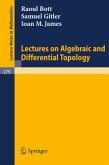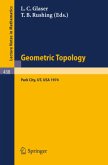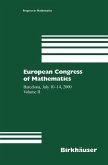This book is addressed to graduate students and researchers in the fields of mathematics and physics who are interested in mathematical and theoretical physics, differential geometry, mechanics, quantization theories and quantum physics, quantum groups etc., and who are familiar with differentiable and symplectic manifolds. The aim of the book is to provide the reader with a monograph that enables him to study systematically basic and advanced material on the recently developed theory of Poisson manifolds, and that also offers ready access to bibliographical references for the continuation of his study. Until now, most of this material was dispersed in research papers published in many journals and languages. The main subjects treated are the Schouten-Nijenhuis bracket; the generalized Frobenius theorem; the basics of Poisson manifolds; Poisson calculus and cohomology; quantization; Poisson morphisms and reduction; realizations of Poisson manifolds by symplectic manifolds and by symplectic groupoids and Poisson-Lie groups. The book unifies terminology and notation. It also reports on some original developments stemming from the author's work, including new results on Poisson cohomology and geometric quantization, cofoliations and biinvariant Poisson structures on Lie groups.
Everybody having even the slightest interest in analytical mechanics remembers having met there the Poisson bracket of two functions of 2n variables (pi, qi) f g ~(8f8g 8 8 ) (0.1) {f,g} = L... ~[ji - [ji~ , ;=1 p, q q p, and the fundamental role it plays in that field. In modern works, this bracket is derived from a symplectic structure, and it appears as one of the main in gredients of symplectic manifolds. In fact, it can even be taken as the defining clement of the structure (e.g., [TIl]). But, the study of some mechanical sys tems, particularly systems with symmetry groups or constraints, may lead to more general Poisson brackets. Therefore, it was natural to define a mathematical structure where the notion of a Poisson bracket would be the primary notion of the theory, and, from this viewpoint, such a theory has been developed since the early 19708, by A. Lichnerowicz, A. Weinstein, and many other authors (see the references at the end of the book). But, it has been remarked by Weinstein [We3] that, in fact, the theory can be traced back to S. Lie himself [Lie].
Everybody having even the slightest interest in analytical mechanics remembers having met there the Poisson bracket of two functions of 2n variables (pi, qi) f g ~(8f8g 8 8 ) (0.1) {f,g} = L... ~[ji - [ji~ , ;=1 p, q q p, and the fundamental role it plays in that field. In modern works, this bracket is derived from a symplectic structure, and it appears as one of the main in gredients of symplectic manifolds. In fact, it can even be taken as the defining clement of the structure (e.g., [TIl]). But, the study of some mechanical sys tems, particularly systems with symmetry groups or constraints, may lead to more general Poisson brackets. Therefore, it was natural to define a mathematical structure where the notion of a Poisson bracket would be the primary notion of the theory, and, from this viewpoint, such a theory has been developed since the early 19708, by A. Lichnerowicz, A. Weinstein, and many other authors (see the references at the end of the book). But, it has been remarked by Weinstein [We3] that, in fact, the theory can be traced back to S. Lie himself [Lie].
"The book serves well as an introduction and an overview of the subject and a long list of references helps with further study." -- Zbl. Math. "The book is well done...should be an essential purchase for mathematics libraries and is likely to be a standard reference for years to come, providing an introduction to an attractive area of further research." -- Mathematical Reviews "The importance and actuality of the subject, as well as the very rigorous and didactic presentation of the content, make out of this book a valuable contribution to current mathematics. The book is intended first of all to mathematicians, but it can be interesting also for a wide circle of readers, including mechanicists and physicists." -- Mathematica








